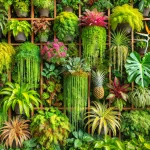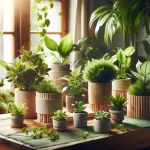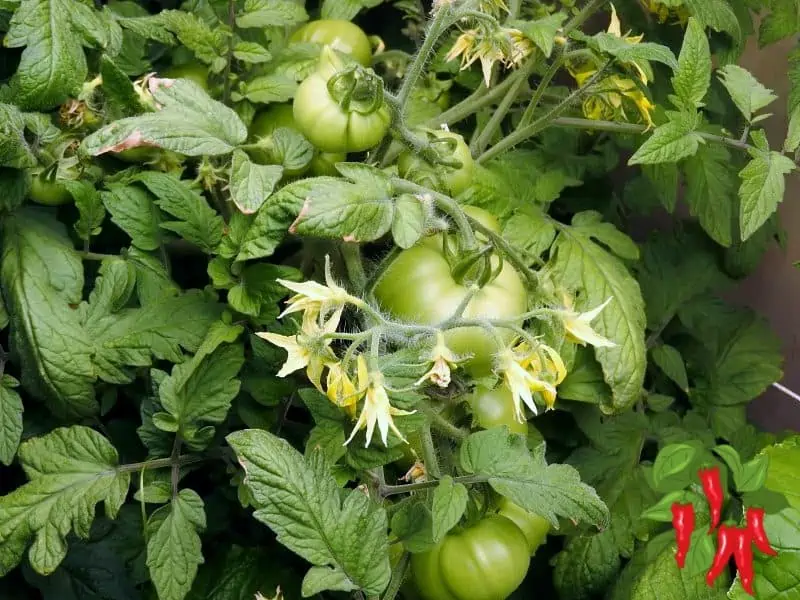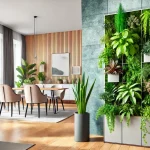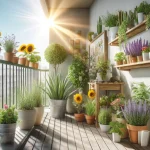This post may contain affiliate links. If you buy something from one of our links we may earn a commission. Thanks
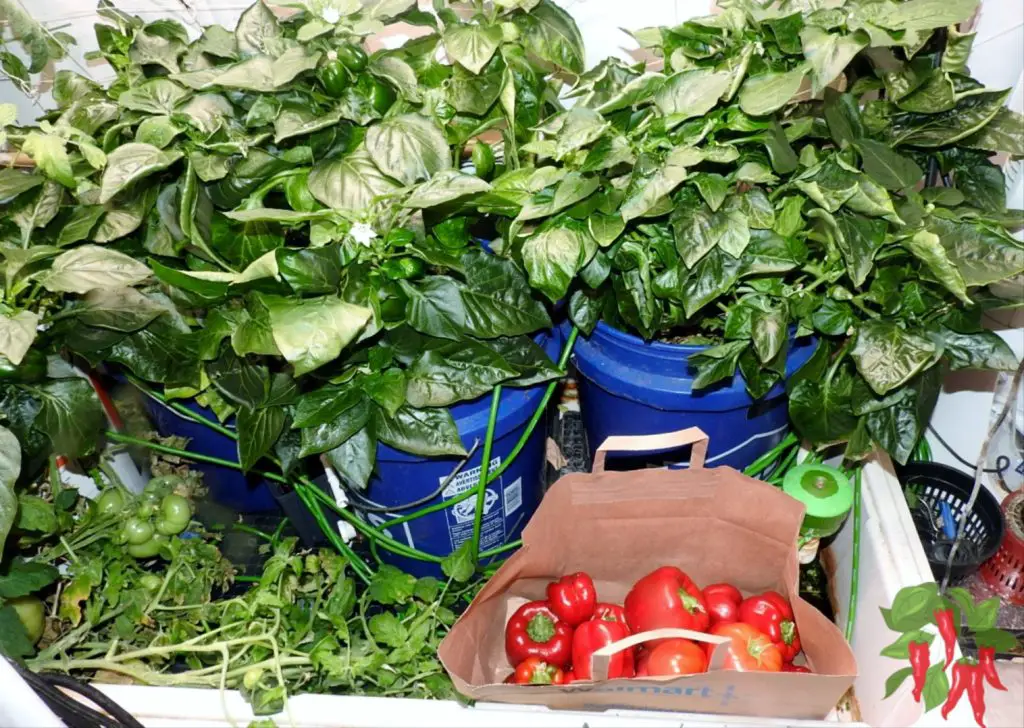
Start your indoor gardening journey confidently with our Beginner’s Guide to Indoor Gardening! Learn how to create a successful indoor garden. Get growing now!
Key Takeaways for Indoor Gardening Success
- Start Small: Begin with a few easy-to-care-for plants and gradually expand as you gain confidence and experience.
- Right Tools for the Job: Invest in quality potting mix, appropriate containers, and if necessary, grow lights to ensure your plants thrive.
- Regular Maintenance: Monitor your plants regularly for watering needs, pest issues, and general health. Pruning and repotting are also essential for growth.
- Environmental Control: Pay attention to the temperature, humidity, and lighting in your indoor garden space to mimic the plants’ natural conditions as closely as possible.
- Learn and Adapt: Use challenges as learning opportunities. Each plant is unique, and what works for one might not work for another.
- Community Engagement: Join gardening groups or online forums for support and advice. Sharing insights and learning from others can be incredibly helpful.
- Enjoy the Journey: Appreciate the process of growing and nurturing your plants, as it can be a rewarding and relaxing hobby.
These pointers should help you maintain a healthy and beautiful indoor garden. Happy gardening!
Creating a Successful Indoor Garden System
Howdy, everyone! Ever thought about bringing a slice of the great outdoors right into your living room?
Well, you’re in luck! Indoor gardening is not just a buzz; it’s a beginner-friendly gateway to greening up your space, no matter the size or growing season.
Bringing Nature Indoors: A Simple Guide to Starting Your Indoor Garden
Perfect for those of us who might not have a backyard or just want a bit of nature closer to our daily lives. In this guide, we’ll walk through the simple steps and gardening tips to set up your plants indoors.
Mastering the Basics: Choosing Plants and Understanding Their Needs
From choosing the right plants to understanding their needs, we’re diving deep into the roots of indoor gardening so that even if you’ve never so much as potted a houseplant before, you’ll feel like a green-thumbed wizard in no time!
Ready, Set, Grow: Kickstarting Your Soil-Free Indoor Garden
So, grab your gardening gloves (or don’t, because it’s going to be clean and soil-free!), and let’s get started.
What is Indoor Gardening and Why is it Ideal for Beginners?
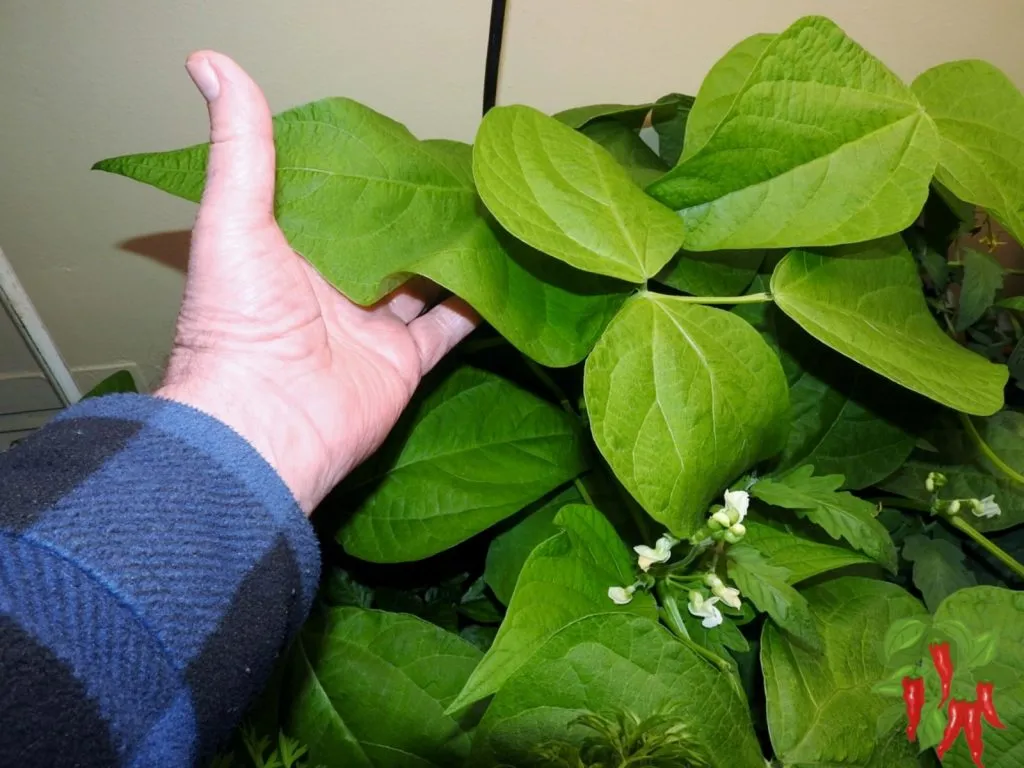
Indoor gardening is the art of growing plants inside, making it ideal for beginners due to its accessibility and simplicity.
Whether it’s a sunny windowsill or a small corner with grow lights, starting an indoor garden requires minimal space and can be a rewarding, educational experience for anyone.
Benefits of Indoor Gardening for Beginners
Getting into indoor gardening? Great choice! It’s like hitting a refresh button for your indoor air because these green buddies soak up the yucky stuff we don’t want to breathe.
Not to mention, having plants around can make you feel happier and more productive. And don’t worry if you’re not a pro—these plants are tough cookies that don’t need a lot of pampering.
Essential Indoor Plants for Beginners
Ready to green up your space? Start with some easy-going plants. Spider plants love a bit of shade and just a splash of water now and then.
Snake plants are another chill choice, cleaning the air and toughing out less-than-perfect conditions.
And pothos? They’re great for draping over shelves or letting their vines hang loose, and they’re not fussy about light. Perfect picks for getting started without any fuss.
Grow Your Own Food Indoors
Starting an herb garden is an easy project you may want to grow in your home garden. They are easy to grow.
They don’t take up much space and can fit on a sunny windowsill. Give mint, parsley, thyme and basil a try.
You can grow edible plants too. Vegetables like lettuce, carrots, and green beans might be something to try.
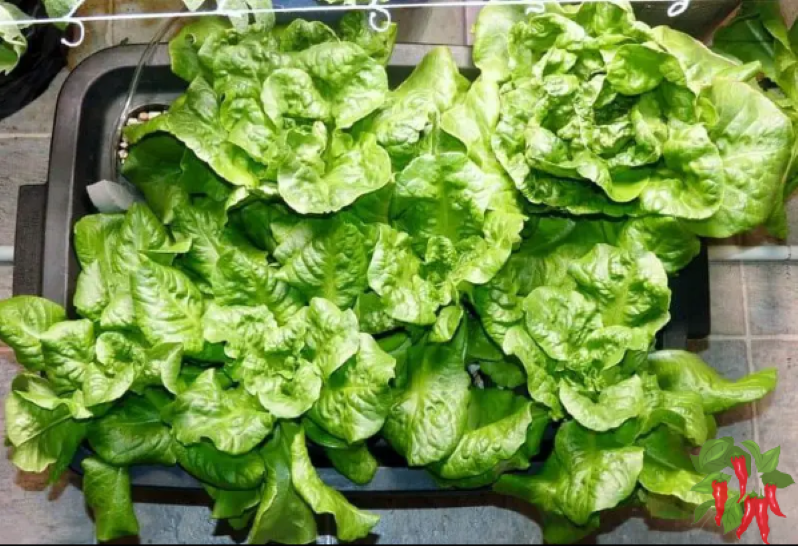
Growing food indoors is incredibly rewarding. I grow hydroponic veggies indoors using coco coir as a grow medium.
When it comes to growing they grow better indoors than in an outdoor garden but remember that most vegetable plants prefer full sun.
Keep your plants under artificial lighting like LED grow lights if natural light is limited.
Gaining Gardening Experience
As your green thumb grows and you become a gardening expert take advantage of indoor garden techniques like hydroponics and learn to germinate seeds without buying transplants.
There are many suitable plants for indoor gardening and many types of indoor gardening systems.
Maybe you want to try a tropical plant to grow indoors like ficas or rubber plants. Generally, these plants require warm temperatures and higher humidity.
I even grow citrus plants indoors and if you give your plants the light your plant will need you can have a stunning garden indoors.
Gardening 101 Basic Plant Care Tips for Growing Plants Indoors
Don’t know where to start? Looking after your indoor plants is pretty simple. Check out how much light your green pals need as some like it sunny, and others are shade-lovers.
Water them just enough to keep them happy, usually once a week does the trick. Make sure their pots drain well to avoid soggy roots.
And give their leaves a quick wipe now and then to help them catch those rays and stay looking fresh.
Setting Up Your Indoor Garden
Setting up your indoor garden is a breeze! Gardening is a great hobby. With just a few essentials, you can transform any corner of your home into a lush oasis.
We’ll guide you through choosing the right spots, pots, and plants to make sure your green haven thrives. Ready to get your hands a little dirty? Let’s go!
Choosing the Right Pots and Containers
Finding the perfect home for your plants is key. Here’s how to pick the right pots:
- Material Matters: Choose between clay, plastic, or ceramic. Clay pots are breathable, plastic is lightweight, and ceramic pots come in various designs.
- Size It Right: Ensure the pot is the right size for your plant’s roots to grow.
- Drainage is Key: Make sure the pot has drainage holes to prevent water from pooling at the bottom.
Selecting the Proper Soil and Fertilizer
Your plants will thrive with the right foundation. Here’s what you need:
- Soil Type: Use potting mix designed for indoor plants. It’s formulated to hold moisture and provide good drainage.
- Fertilizer Boost: Feed your plants with a balanced, water-soluble fertilizer every few weeks to ensure they get all the nutrients they need.
Why I Prefer Using Coco Coir
Coco coir has become my go-to for indoor gardening, and here’s why it might just win you over too:
- Excellent Drainage and Aeration: Coco coir prevents water from getting trapped around plant roots, reducing the risk of root rot. Its airy structure promotes healthy root growth by allowing plenty of oxygen to circulate.
- Water Retention: While it drains well, coco coir also retains just the right amount of moisture, which means less frequent watering and happier plants.
- Sustainable Choice: Made from the natural fiber of coconut husks, coco coir is a renewable resource that’s both environmentally friendly and easy to dispose of responsibly.
- pH Neutral: Unlike some soil amendments, coco coir is pH neutral. This means it won’t alter the acidity of your soil, making it a great choice for a wide variety of indoor plants.
- Disease Resistant: Coco coir is less likely to harbor fungal spores or pests, making your indoor garden safer and healthier.
With these benefits, it’s easy to see why coco coir is a top pick for gardeners who want to ensure their indoor plants thrive.
Gardening Supplies
Your indoor garden will generally need some basic gardening supplies to start your garden.
- Containers or Pots: Choose containers with drainage holes to prevent water from pooling at the roots. Consider various sizes depending on the type of plants you want to grow.
- Potting Soil: Get a high-quality potting mix suitable for indoor plants. Look for soil that promotes good drainage and aeration.
- Watering Can: A watering can with a long spout helps control the water flow, making it easier to water your plants without splashing the leaves unnecessarily.

- Grow Lights: If natural light is limited in your home, grow lights are essential. They provide the necessary light spectrum to help your plants grow healthy.
- Fertilizer: Choose a balanced, water-soluble fertilizer or one specifically formulated for indoor plants to provide nutrients.
- Pruning Shears: Sharp shears are necessary for pruning dead or overgrown branches, helping keep your plants tidy and healthy.
- Humidity Tray: Some indoor plants thrive in a more humid environment. A humidity tray or a simple spray bottle can help maintain the right moisture levels.
- Plant Labels and Marker: If you’re growing multiple types of plants, labels help you keep track of their names and care requirements.
- Thermometer and Humidity Gauge: Monitoring the temperature and humidity around your plants will help you adjust their environment to suit their needs.
- Small Hand Tools: Include a trowel, fork, and cultivator for potting and repotting plants, removing weeds, and aerating the soil. These tools are indispensable for detailed gardening tasks.
With these essential supplies, you’re well-prepared to start and maintain a vibrant indoor garden.
Start a Vertical Garden: A Fun Way to Green Up Your Space
Are you running out of floor space but still itching to add more green to your home? Why not go vertical?
Starting a vertical garden is a fantastic way to maximize your gardening real estate, especially if you’re tight on space.
Let’s talk about how you can stack your greenery upwards and enjoy a lush, vibrant wall of plants.
Why Go Vertical?
Vertical gardening isn’t just a space-saver it’s also a showstopper. Imagine a wall of green that acts as a living art piece in your home.
Plus, it’s perfect for urban dwellers in apartments or homes with small yards. And here’s a bonus: it can even help regulate the temperature in your space and improve air quality. Neat, right?
Picking Your Plants
When you’re planning a vertical garden, think about the light the area gets because this will determine what kind of plants will thrive there:
- Herbs: For a kitchen garden, herbs like basil, mint, and parsley love vertical setups.
- Succulents: Low-maintenance and gorgeous, succulents are perfect for sunny spots.
- Ferns and Ivy: If your vertical space doesn’t get much light, go for shade-lovers like ferns or ivy.
Getting the Right Setup
There are a couple of ways to create your vertical garden, depending on how handy you are or how much you want to spend:
- Pocket Planters: These are great for beginners. You can hang them up like a picture and they’re ready to go.
- DIY Pallets: Feeling crafty? Convert an old pallet into a plant paradise.
- Trellis or Climbing Frame: Ideal for climbing plants or if you want to train your plants to grow in certain patterns.
Care Tips for Vertical Gardens
- Water Wisely: Vertical gardens may dry out faster than regular ones, especially if they’re exposed to the wind. Check the soil regularly to make sure it’s moist.
- Feed Your Friends: Like any garden, feeding your plants the right nutrients will keep them happy. Use a liquid fertilizer that can easily reach all roots in your vertical setup.
- Prune and Groom: Keep your garden looking tidy and healthy by pruning regularly. This will help control growth and shape your garden as you like.
Fun Ideas to Try
- Edible Wall: Grow a mix of herbs, small vegetables, and edible flowers for a garden that looks good and tastes good!
- Theme Your Garden: Go tropical with ferns and climbing plants or create a desert vibe with various types of cacti and succulents.
Starting a vertical garden is like creating a living painting that grows. It’s fun, it’s rewarding, and it’s a bit of an adventure.
So why not give it a shot and see what kind of vertical garden paradise you can create?
Grab some pots, pick your plants, and start stacking—your green thumb just got a whole lot more exciting!
Starting Seeds: Your First Step to a Green Thumb Adventure
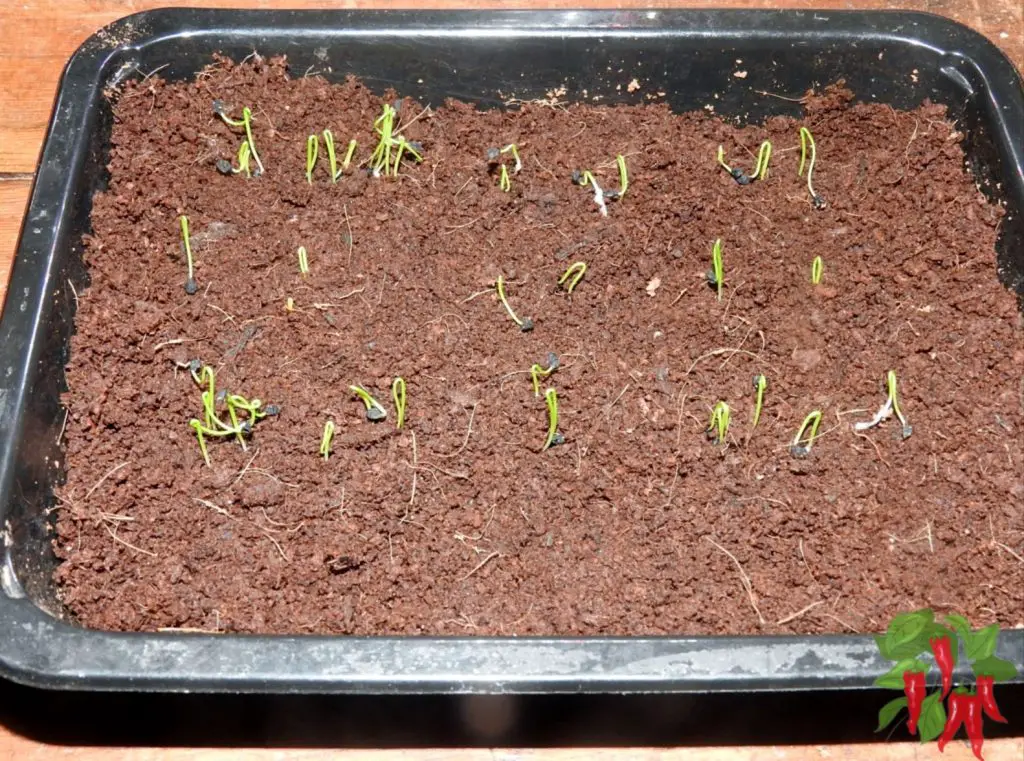
Ready to get your hands a little dirty and start your own garden from scratch? Starting with seeds isn’t just exciting; it lets you watch the magic of nature unfold right in your home.
Let’s dive into the nitty-gritty of getting those tiny seeds to sprout into lush, thriving garden plants!
What’s Germination All About?
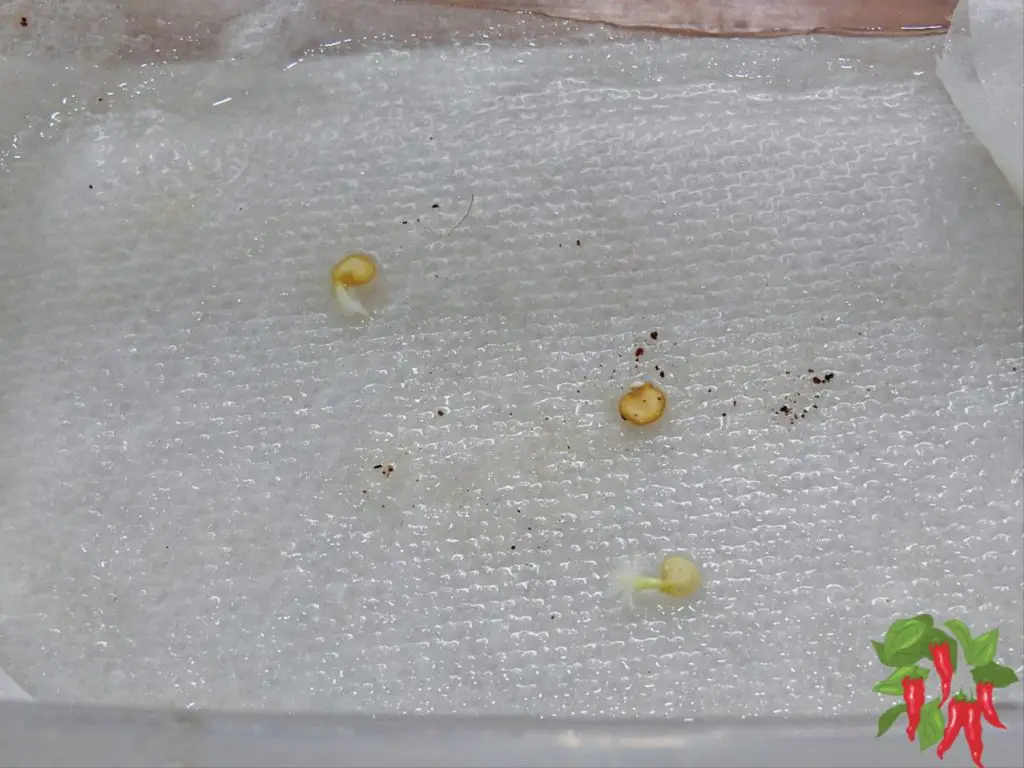
Think of germination as a plant’s baby steps. It’s when your seeds wake up and start to grow.
Each type of seed has its own little wishlist of what it needs to start growing—like just the right amount of water, warmth, and tender loving care.
Make sure to follow the instructions on the seed packet. Those little guidelines are your seeds’ way of whispering how they like things done!
Setting the Stage for Your Seeds
- Pick the Right Soil: Go for something light and fluffy, not the heavy stuff from your outdoor garden. You want a mix that lets those tiny roots breathe and drain water well. Oh, and make sure your pots have holes at the bottom—no one likes wet feet, especially not your seedlings!
- Planting Time: Pop your seeds into the soil at the depth mentioned on their packet. It’s like tucking them into a cozy bed—too deep and they won’t find their way up, too shallow and they might dry out.
Creating the Perfect Seedling Spa
- Moisture Matters: Keep the soil moist, but don’t overdo it. Think damp sponge, not a soaking wet towel.
- Warmth is Welcomed: Seeds love a bit of warmth to get going. A warm spot or a heat mat can be just the ticket.
- Let There Be Light: Once those sprouts show up, they’re gonna be hungry for light. If your windows don’t bring in enough sunshine, a grow light can do wonders.
Smart Gardens: Your High-Tech Helper
Got a smart garden? These handy gadgets like the AeroGarden are like the VIP lounge for seeds. They’ve got everything from lights to self-watering features, making sure your seeds have everything they need without you having to fuss too much.
The Aerogarden is an easy-to-use hydroponic system that is great for growing herbs, patio tomatoes, and peppers. With a built-in light and compact size you can fit it anywhere.
I do a lot of container gardening but over the past 2 years, I am still using my AeroGarden Harvest and love it.
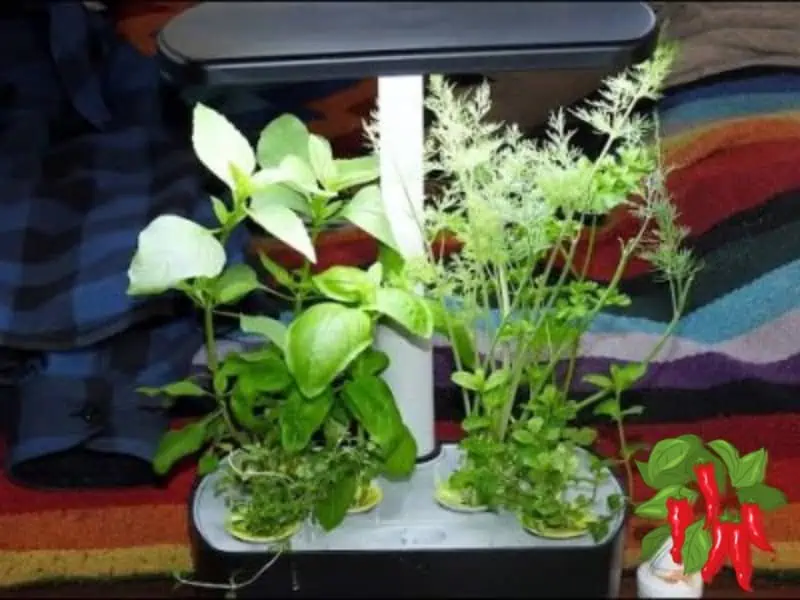
Caring for Your Baby Plants
- Go Gentle: When it’s time to move or transplant them, be gentle. Young plants are a bit like toddlers—easily upset by too much change too fast.
- Room to Grow: If your seedlings start looking cramped, give them some space by thinning them out. It’s like choosing who gets to stay at the party—keep the strongest, and give the others a fond farewell.
Hydroponic Dreams
Thinking about hydroponic growing? Moving your seedlings to a hydroponic system can be super smooth.
Just make sure the setup matches their needs, and watch them grow faster than you can say “hydroponics”!
Tips for Thriving Indoor Seedlings
- Annuals Love Indoors: Annual plants like tomatoes or marigolds are great to start indoors—they sprout quickly and will keep you smiling all season.
- Special Care Plants: Some plants need a bit more TLC, especially those that crave lots of light. Match their needs with the right spot or a good light setup, and they’ll be happy campers.
Starting from seeds is a rewarding journey that transforms a tiny speck into a beautiful plant. Keep an eye on their needs, be patient, and you’ll soon have a garden to be proud of. Remember, every big garden started with just a small seed. Happy gardening!
Understanding Watering Needs of Indoor Plants
Watering can make or break your indoor garden. Keep these tips in mind:
- Check the Topsoil: Before watering, check the top inch of soil. If it’s dry, it’s time to water.
- Water Deeply but Sparingly: Water thoroughly until it drains out the bottom, but only when needed.
- Mind the Seasons: Plants often need less water in the winter months. Adjust your watering schedule accordingly.
Optimizing Your Indoor Gardening System
Ready to take your indoor garden to the next level? Optimizing your setup isn’t just smart—it’s essential for plant health and growth.
We’ll explore the best tools and tweaks to enhance your garden’s efficiency, ensuring your plants not only survive but thrive in their indoor environment. Let’s get optimizing!
Utilizing Grow Lights for Indoor Plants
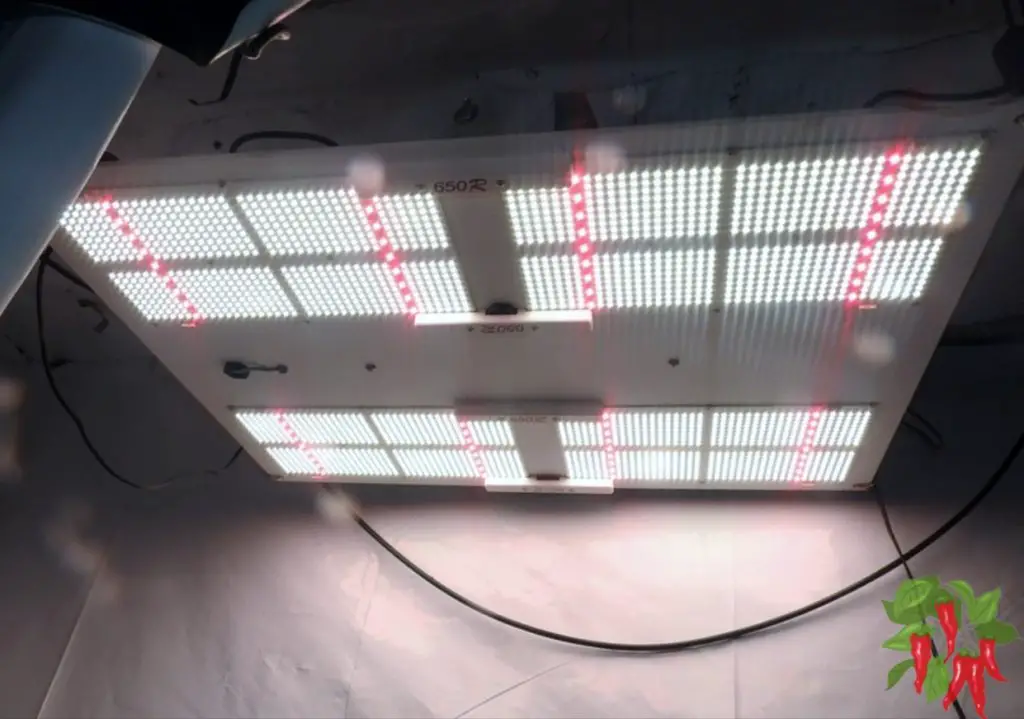
Brightening up your indoor garden with the right grow lights can make all the difference. Here’s how to light the way:
- Choose the Right Type: LED lights are energy-efficient and ideal for a range of plants. Fluorescent bulbs work well for herbs and low-light plants.
- Placement Matters: Position lights 6-12 inches above your plants, depending on the light intensity and plant type.
- Timing is Everything: Keep lights on for 12-16 hours a day to mimic natural sunlight. Use a timer to maintain a consistent light cycle.
Effective Plant Care Techniques for Indoor Gardening
Keep your indoor garden lush and healthy with these pro tips:
- Regular Pruning: Snip off yellowing leaves and overgrown branches to keep the plants tidy and focused on new growth.
- Pest Patrol: Keep an eye out for pests. Wipe leaves with soapy water or use natural pesticides to keep bugs at bay.
- Rotate Your Plants: Rotate your plants occasionally to ensure they grow evenly and get equal light exposure.
- Monitor Humidity: Some plants thrive in humid conditions. Use a small humidifier or mist plants regularly to maintain the ideal humidity level.
Managing Common Issues in Indoor Gardening
Even the best indoor gardens can hit a few bumps. From pesky pests to watering woes, managing common issues is all part of the gardening game.
To be honest, sometimes indoor plants die through no fault of your own.
In this section, we’ll tackle how to identify, prevent, and resolve the typical troubles that might come your way, keeping your indoor oasis thriving.
Preventing Overwatering and Ensuring Proper Drainage
Too much water can drown your plants root system faster than you’d think. Here’s how to keep things balanced:
- Feel the Soil: Don’t just go on a schedule. Before watering, check if the top of the soil is dry.
- Use the Right Pots: Ensure all containers have drainage holes. No holes? Time to drill some or switch pots.
- Monitor Water Intake: Adjust your watering based on the season and your plant’s growth phase. Less water may be needed during winter or when growth slows.
Combatting Pests in an Indoor Garden
Don’t let bugs bully your plants. Here’s how to fight back:
- Stay Vigilant: Regularly inspect your plants for signs of pests like sticky leaves, webs, or visible bugs.
- Natural Remedies: Neem oil or a insecticiidal soap spray can be effective against many common pests.
- Isolate Infected Plants: Prevent pests from spreading by quarantining affected plants as soon as you spot trouble.
- Keep it Clean: Regular cleaning of leaves and the surrounding area helps prevent pest infestations. Dust and debris can attract pests, so keeping your garden tidy is key.
Indoor Gardening FAQ: Everything You Need to Know
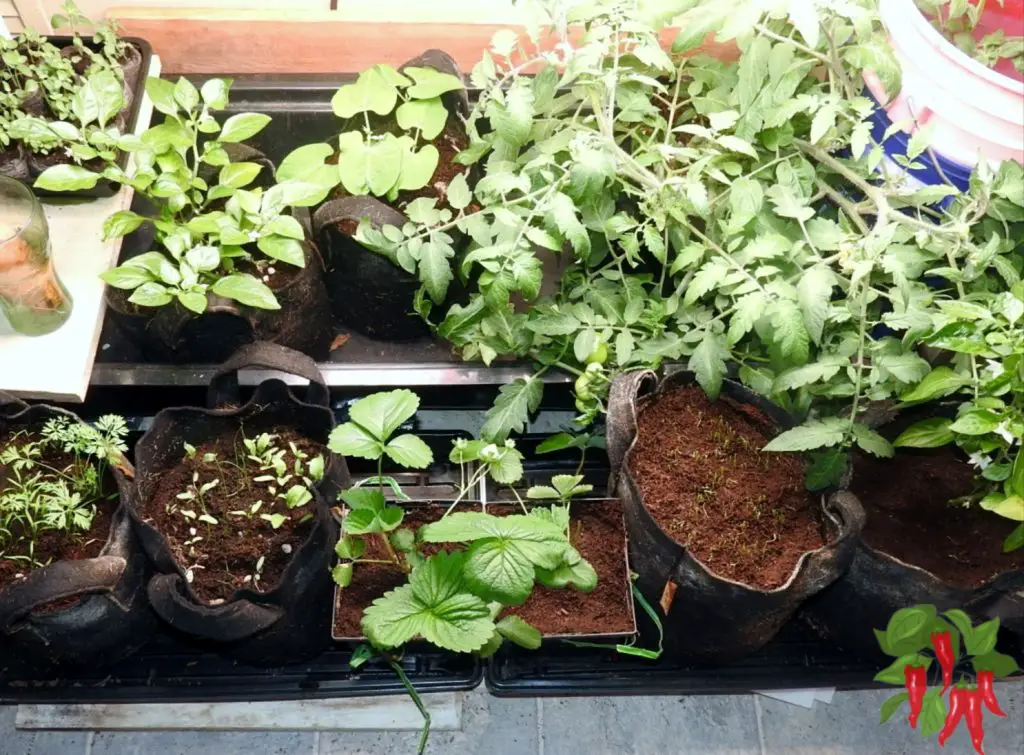
Curious about getting started with indoor gardening? Whether you’re wondering about the basics or have some specific concerns, I’ve gathered the most common questions to help you get your garden growing!
Q. What is the ideal amount of space for an indoor garden?
A. It depends on what you’re growing. Small herbs like chives can thrive in tiny spaces like a windowsill, while larger plants might need more room, such as an entire room dedicated to your greenery.
Q. What type of soil should I use for indoor gardening?
A. Always opt for a potting mix designed for indoor use. These mixes are crafted to ensure proper drainage and aeration, crucial for healthy roots and plant growth.
Q. What’s the difference between indoor and outdoor potting soil?
A. Indoor potting soil is formulated to be looser and less compact than outdoor soil, facilitating better drainage and preventing waterlogging, which is vital for container gardening.
Q. Can I use any container for my indoor plants?
A. Yes, but make sure whatever you choose has good drainage. Common options include traditional pots, mason jars, or even creative DIY containers, but always ensure they have drainage holes.
Q. How often should I change the soil in my indoor garden?
A. It’s a good idea to refresh the soil every 1-2 years. Indoor soil can compact and lose nutrients over time, which can hinder plant growth.
Q. What is the biggest challenge with indoor gardening?
A. Overwatering is a frequent issue. It’s crucial to ensure adequate drainage and to adjust watering to the plant’s needs, which can prevent root rot and other water-related issues.
Q. How do I know if I’m watering my plants correctly?
A. Look for signs like yellowing, browning, or dropping leaves. Touch the soil; if it’s dry an inch below the surface, it’s usually time to water.
Q. Do indoor plants need fertilizer?
A. Yes, since indoor plants don’t naturally replenish nutrients like outdoor plants. Use a diluted water-based or slow-release fertilizer to feed your plants without overwhelming them.
Q. What are the benefits of grow lights for indoor plants?
A. Grow lights provide the necessary spectrum of light for photosynthesis when natural sunlight is insufficient, especially in winter or for shaded areas.
Q. How can I prevent pests in my indoor garden?
A. Regularly check your plants for early signs of infestation. Natural remedies like soapy water can be effective for managing small pest problems.
Q. Do indoor plants really clean the air?
A. While plants can improve indoor air quality to some extent, the overall effectiveness depends on the number and types of plants you have in your space.
Q. What should I do if I want to start a garden in winter?
A. Utilize grow lights and ensure your indoor environment is conducive to plant growth—consider temperature and humidity controls.
Q. What plants are recommended for beginners?
A. Easy-care plants like spider plants, snake plants, and pothos are great for beginners due to their low maintenance and robust nature.
These answers should give you a solid start on your indoor gardening journey! If you have more detailed questions or need specific advice, always feel free to reach out to gardening communities or local experts for guidance.
Wrapping It Up: Thriving with Your Indoor Garden
Congratulations on embarking on your indoor gardening journey!
By now, you should have a solid foundation to start cultivating your own green oasis indoors.
Remember, the key to a flourishing indoor garden lies in understanding the basics of indoor gardening and continuously learning as you grow.
Below, let’s recap some essential points to keep your indoor garden thriving year-round.
Embrace Ongoing Learning
Always stay curious and proactive about learning new gardening techniques.
The world of indoor gardening is vast, and there’s always something new to discover.
Whether it’s experimenting with different plant varieties or advanced care techniques, your garden will benefit greatly from your willingness to learn and adapt.
Stay Connected with Community
Join gardening forums, follow blogs, and connect with other gardeners.
Sharing experiences and troubleshooting together can make your gardening journey more enjoyable and less daunting.
Plus, the indoor gardening community is a treasure trove of tips, tricks, and advice.
Monitor and Adapt
Keep a close eye on your garden’s progress and make adjustments as needed.
Whether it’s altering your watering schedule, tweaking light sources, or repotting plants that have outgrown their current homes, being responsive to your plants’ needs will ensure they remain healthy and vibrant.
Enjoy the Process
Remember to take pleasure in the process of tending to your indoor garden. The peace and satisfaction that come from nurturing living things are incredibly rewarding.
Your indoor garden is not just a collection of plants, but a growing testament to your care and dedication.
By following these guidelines and keeping your garden’s best interests at heart, you’re well on your way to becoming a seasoned indoor gardener.
Enjoy the lush, vibrant beauty of your indoor oasis and the countless benefits it brings to your home and life!
Read and learn more: Indoor Apartment Gardening: 15 Point Comprehensive Guide
How to grow potatoes indoors in 5-gallon buckets
Visit my Amazon Influencer Page for videos and gardening products Grow Your Own Garden










